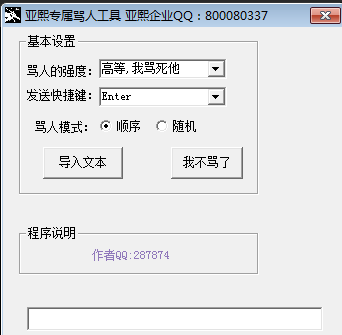【转】Sql Server参数化查询之where in和like实现之xml和DataTable传参
时间:2022-03-14 04:33
转载至:
在上一篇中介绍了在Sql Server使用参数化查询where in的几种实现方案,遗漏了xml和表值参数,这里做一个补充
文章导读
,DataTable传参
方案5 使用xml参数
对sql server xml类型参数不熟悉的童鞋需要先了解下XQuery概念,这里简单提下XQuery 是用来从 XML 文档查找和提取元素及属性的语言,简单说就是用于查询xml的语言说到这就会牵着到XPath,其实XPath是XQuery的一个子集,XQuery 1.0 和 XPath 2.0 共享相同的数据模型,并支持相同的函数和运算符,XPath的方法均适用于XQuery,假如您已经学习了 XPath,那么学习 XQuery 也不会有问题。详见
XQuery概念了解后需要进一步了解下Sql Server对xml的支持函数,主要为、、、、 ,详见
使用xml方式实现where in时有两种实现方式,使用value和exist,在这里推荐使用exist方法,msdn是这样描述的:
D.使用 exist() 方法而不使用 value() 方法
由于性能原因,不在谓词中使用 value() 方法与关系值进行比较,而改用具有 sql:column() 的 exist()。
使用xml的value方法实现(不推荐)
DataTable dt = new DataTable();
using (SqlConnection conn = new SqlConnection(connectionString))
{
string xml = @"
<root>
<UserID>1</UserID>
<UserID>2</UserID>
<UserID>5</UserID>
</root>";
SqlCommand comm = conn.CreateCommand();
//不推荐使用value方法实现,性能相对exist要低
comm.CommandText = @"select * from Users
where exists
(
select 1 from @xml.nodes(‘/root/UserID‘) as T(c)
where T.c.value(‘text()[1]‘,‘int‘)= Users.UserID
)";
//也可以这样写,结果是一样的
//comm.CommandText = @"select * from Users
// where UserID in
// (
// select T.c.value(‘text()[1]‘,‘int‘) from @xml.nodes(‘/root/UserID‘) as T(c)
// )
comm.Parameters.Add(new SqlParameter("@xml", SqlDbType.Xml) { Value = xml });
using (SqlDataAdapter adapter = new SqlDataAdapter(comm))
{
adapter.SelectCommand = comm;
adapter.Fill(dt);
}
}
使用xml的exist方法实现(推荐)
DataTable dt = new DataTable();
using (SqlConnection conn = new SqlConnection(connectionString))
{
string xml = @"
<root>
<UserID>1</UserID>
<UserID>2</UserID>
<UserID>5</UserID>
</root>";
SqlCommand comm = conn.CreateCommand();
//使用xml的exist方法实现这样能够获得较高的性能
comm.CommandText = @"select * from Users where @xml.exist(‘/root/UserID[text()=sql:column(""UserID"")]‘)=1";
comm.Parameters.Add(new SqlParameter("@xml", SqlDbType.Xml) { Value = xml });
using (SqlDataAdapter adapter = new SqlDataAdapter(comm))
{
adapter.SelectCommand = comm;
adapter.Fill(dt);
}
}
列举下不同xml结构的查询方法示例,在实际使用中经常因为不同的xml结构经常伤透了脑筋
DataTable dt = new DataTable();
using (SqlConnection conn = new SqlConnection(connectionString))
{
string xml = @"
<root>
<User>
<UserID>1</UserID>
</User>
<User>
<UserID>2</UserID>
</User>
<User>
<UserID>5</UserID>
</User>
</root>";
SqlCommand comm = conn.CreateCommand();
//不推荐使用value方法实现,性能相对exist要低
comm.CommandText = @"select * from Users
where UserID in
(
select T.c.value(‘UserID[1]‘,‘int‘) from @xml.nodes(‘/root/User‘) as T(c)
)";
//也可以这样写,结果是一样的
//comm.CommandText = @"select * from Users
// where exists
// (
// select 1 from @xml.nodes(‘/root/User‘) as T(c)
// where T.c.value(‘UserID[1]‘,‘int‘) = Users.UserID
// )";
comm.Parameters.Add(new SqlParameter("@xml", SqlDbType.Xml) { Value = xml });
using (SqlDataAdapter adapter = new SqlDataAdapter(comm))
{
adapter.SelectCommand = comm;
adapter.Fill(dt);
}
}
DataTable dt = new DataTable();
using (SqlConnection conn = new SqlConnection(connectionString))
{
string xml = @"
<root>
<User>
<UserID>1</UserID>
</User>
<User>
<UserID>2</UserID>
</User>
<User>
<UserID>5</UserID>
</User>
</root>";
SqlCommand comm = conn.CreateCommand();
//使用xml的exist方法实现这样能够获得较高的性能
comm.CommandText = @"select * from Users where @xml.exist(‘/root/User[UserID=sql:column(""UserID"")]‘)=1";
comm.Parameters.Add(new SqlParameter("@xml", SqlDbType.Xml) { Value = xml });
using (SqlDataAdapter adapter = new SqlDataAdapter(comm))
{
adapter.SelectCommand = comm;
adapter.Fill(dt);
}
}
使用xml参数时需要注意点:
1.不同于SQL语句默认不区分大小写,xml的XQuery表达式是严格区分大小写的,所以书写时一定注意大小写问题
2.使用exist时sql:column() 中的列名须使用双引号,如sql:column("UserID"),若非要使用单引号需要连续输入两个单引号 sql:column(‘‘UserID‘‘)
3.不管是where in或是其他情况下使用xml查询时能用exist(看清楚了不是sql里的exists)方法就用exist方法,我们不去刻意追求性能的优化,但能顺手为之的话何乐而不为呢。
方案6 使用表值参数(Table-Valued Parameters 简称TVP Sql Server2008开始支持)
按照msdn描述TVP参数在数据量小于1000时有着很出色的性能,关于TVP可以参考
这里主要介绍如何使用TVP实现DataTable集合传参实现where in
1.使用表值参数,首先在数据库创建表值函数
create type IntCollectionTVP as Table(ID int)
2.表值函数创建好后进行c#调用,
注意点:
1.需要SqlParameter中的SqlDbType设置为SqlDbType.Structured然后需要设置TypeName为在数据库中创建的表值函数名,本示例中为IntCollectionTVP
2.构造的DataTabel列数必须和表值函数定义的一样,具体列名随意,无需和表值函数定义的列名一致,数据类型可以随意,但还是建议和表值类型定义的保持一致,一来省去隐式类型转换,二来可以在初始化DataTabel时就将不合法的参数过滤掉
3.建议定义tvp的时候最好查询条件里的类型和tvp对应字段类型保持一致,这样可以避免隐式类型转换带来的性能损失
DataTable resultDt = new DataTable();
using (SqlConnection conn = new SqlConnection(connectionString))
{
SqlCommand comm = conn.CreateCommand();
comm.CommandText = @"select * from Users(nolock)
where exists
(
select 1 from @MyTvp tvp
where tvp.ID=Users.UserID
)";
//构造需要传参的TVP DataTable
DataTable tvpDt = new DataTable();
//为表添加列,列数需要和表值函数IntCollectionTVP保值一致,列名可以不一样
tvpDt.Columns.Add("myid", typeof(int));
//添加数据
tvpDt.Rows.Add(1);
tvpDt.Rows.Add(2);
tvpDt.Rows.Add(3);
tvpDt.Rows.Add(4);
//这里的TypeName对应我们定义的表值函数名
comm.Parameters.Add(new SqlParameter("@MyTvp", SqlDbType.Structured) { Value = tvpDt, TypeName = "IntCollectionTVP" });
using (SqlDataAdapter adapter = new SqlDataAdapter(comm))
{
adapter.SelectCommand = comm;
adapter.Fill(resultDt);
}
}
总结:
至此,一共总结了6六种where参数化实现,分别如下
1.使用CHARINDEX或like实现where in 参数化
2.使用exec动态执行SQl实现where in 参数化
3.为每一个参数生成一个参数实现where in 参数化
4.使用临时表实现where in 参数化
5.使用xml参数实现where in 参数化
6.使用表值参数(TVP)实现where in 参数化
其中前4种在一文中进行了列举和示例
6种方法,6种思路,
其中方法1 等于完全弃用了索引,若无特殊需要不建议采用,
方法2 本质上合拼SQL没啥区别与其用方法2自欺其人还不如直接拼接SQL来的实惠
方法3 受参数个数(做多2100个参数)限制,而且若传的参数过多性能如何有待验证,可以酌情使用
方法4 示例中采用的临时表,其实可以换成表变量性能也许会更好些,不过写法上有些繁琐,可以具体的封装成一个函数会好些(推荐)
方法5 使用xml传参,既然有这种类型说明性能上应该还不错,其它会比拼接SQL好很多,使用上也还比较方便,不过需要开发人员对xml查询有一定了解才行(推荐)
方法6 tvp方式sql server2008以后才可以使用,很好很强大,若只为where in 的话可以定义几个tvp where in问题就很容易解决了,而且是强类型也更容易理解(推荐)
不好去评论具体那种方法最好,还是那句老话合适的最好。



























